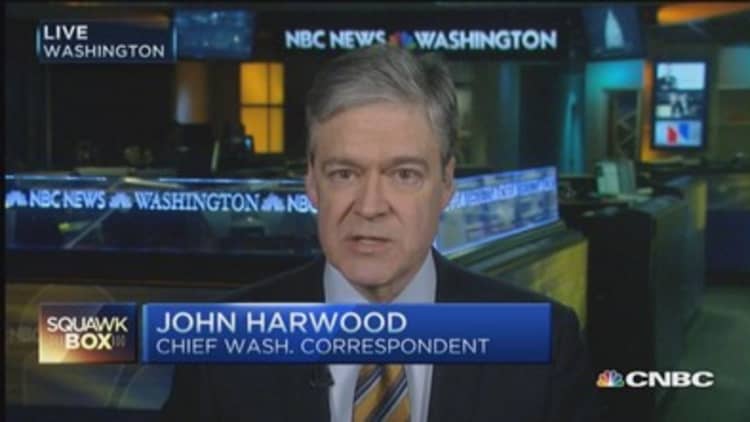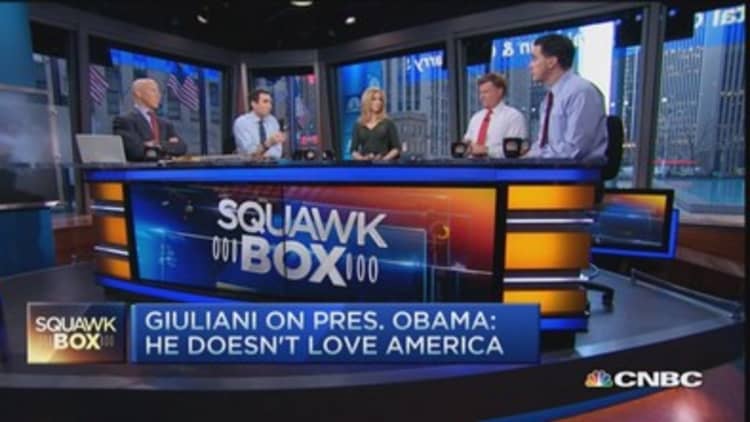
President Barack Obama has long since passed the point when Congress would readily enact policies he favors. But by dissecting the forces underlying middle class income stagnation, he seeks to shape what Washington does about it—now or later.
That's the significance of the 2015 Economic Report of the President released by the White House on Thursday morning. It doesn't reveal anything Wall Street and Main Street don't already know about current conditions, which include solid overall growth, accelerating job creation and continued low inflation.
Read More
But it tries to remove the mystery from the failure of average families to get ahead—not just in the recovery from the Great Recession, but for a very long time. The president's economic advisers divide recent American history into three distinct economic eras.
The first, from 1948-1973, they call "The Age of Shared Growth." Economic innovation made worker productivity soar. Income inequality shrank, and a surge of working women expanded the labor force. Incomes grew fast enough to double in 25 years.
Read More
The second, from 1973-1995. they call "The Age of Expanded Participation." Productivity growth slowed and profits flowed increasingly to the highest earners. But even faster growth of women in the workforce masked those developments.
The third, from 1995-2013, they call "The Age of Productivity Recovery." Technological change accelerated output per worker once again. But the benefits were offset by continued income inequality and a fall in "labor force participation" by men and women alike.
"This is the big picture challenge we're trying to overcome as an economy," said Jason Furman, who chairs Obama's Council of Economic Advisers.

The report includes Obama's prescriptions for meeting the challenge. They include more government spending on education and infrastructure to raise productivity further, higher taxes on the wealthy to curb inequality and new immigration policies to safeguard the supply of workers as more baby boomers retire.
The president casts trade expansion—a rare source of agreement with Republicans and discord with Democrat-friendly labor unions—as a boon to average workers because of the inclusion of labor standards that prevent an international race to the bottom.
At a briefing for reporters, the White House advisers acknowledged that some long-term trends remain only dimly understood. One is the gradual long-term decline of labor-force participation by men. In part, they said, it may reflect positive trends such as health improvements that allow more men to reach their retirement years. But it's also in part a measure of technological changes that have left some low-skilled male workers behind.
Read MoreFederal Reserve minutes indicate no rush to raise interest rates
Agreement on the causes won't produce agreement on solutions in any event. Except for trade, congressional Republicans reject virtually all of Obama's economic agenda. Their own, and that of GOP candidates for the White House in 2016, includes tax cuts and reduced regulations.
The Democrats' leading White House prospect, former Secretary of State Hillary Rodham Clinton, is developing her own economic platform and will have incentives to separate herself from an incumbent in his seventh year. But Obama aims to shape that debate even as its focus inexorably shifts from his presidency toward his successor.


